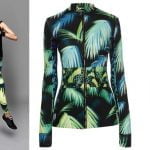 HOUSTON, Texas (KTRK) — Many of us try to lead healthy lives by choosing well-known brands when it comes to the food and hygiene products we use with our families. But when was the last time you really read the ingredient labels on supplements, vitamins and beauty products?
HOUSTON, Texas (KTRK) — Many of us try to lead healthy lives by choosing well-known brands when it comes to the food and hygiene products we use with our families. But when was the last time you really read the ingredient labels on supplements, vitamins and beauty products?
Open your kitchen pantry or bathroom vanity and it’s likely you’ll find formaldehyde and asbestos hiding in some of the most common items.
We took a tour around the kitchen with Dr. Noreen Khan-Mayberry, better known as the “Tox Doc,” and it turns out a whole lot of the most common supplements have ingredients at such high concentrations, they can actually be dangerous, or even toxic, to you or your children.
We started with popular meal replacement, or supplement, drinks.
“There’s 14 grams of sugar in each bottle, and unfortunately, there are some children who might drink this more than once a day. If you’re drinking two of these a day, you have exceeded 25 to 35 grams,” Dr. Khan-Mayberry said.
The maximum amount of sugar recommended for men is 35 grams in a day, and 25 grams for women.
“A lot of women have IBS (irritable bowel syndrome) issues, and so what they don’t realize is these ingredients in here — the soy, the wheat, the corn — they really are irritants to the GI tract,” Dr. Khan-Mayberry said.
But that’s not all. These drinks can also be dangerous for grandma and grandpa.
“It does have this upper 30 percent vitamin K, and so that’s going to possibly mess with their high blood pressure medication,” Dr. Khan-Mayberry said.
She cautioned that could lead to cardiovascular issues and even potentially a stroke.
Next up, vitamins.
“Vitamins are good for you, but there’s an amount that can be toxic,” Dr. Khan-Mayberry explained. “Vitamin A is something you definitely don’t want to get too much of. You don’t want liver damage, because your liver is basically your garbage disposal for your body, and when that stops working, just everything starts to fail.”
You also probably have protein powder somewhere in your kitchen, but beware, the excess iron in protein supplements can be toxic to you.
“Men have the right amount of iron, and they don’t really metabolize it. They don’t get rid of it, so they’re storing it. So they don’t want excess amounts of iron. That’s why they tell them no, because you’re not really going to get rid of it,” Dr. Khan-Mayberry said.
If the body burden is basically maxed out, then you can have toxic effects, even affecting some organs as well, according to Dr. Khan-Mayberry.
Now that we’ve gone through the kitchen, let’s find out what’s lurking on the ingredients list of some of your favorite products, starting with lotions.
“When I see propylene glycol, which is the ‘green’ version of ethylene glycol, which is what you put in your car for coolant. That’s actually formaldehyde releaser in the skin. So that’s going to dry your skin long-term,” Dr. Khan-Mayberry said.
Ladies, your makeup can be just as dangerous.
“Let’s talk about lipstick and lip gloss, because over a lifetime, women tend to consume, or eat, five to seven pounds,” Dr. Khan-Mayberry said.
She adds that lipsticks can contain lead, arsenic and even some formaldehyde.
When it comes to your makeup, if it’s metallic, it can be toxic.
“(If) you can see the flecks of metal in there, those are not good for you. They can contain heavy metal,” Dr. Khan-Mayberry said.
So, how can you avoid all the toxins in your favorite products? The Tox Doc says do your research to understand the ingredients that are dangerous to you and any of your health conditions.
“You can’t necessarily control what you’re exposed to outdoors in the air, but you can control what you’re putting in your body and on your body. So take control of that,” Dr. Khan-Mayberry said.
Potentially toxic ingredients to avoid:
Lake colorings – Lipstick, eyeshadow, foundation
Ingredient to look for — any color that has the word “lake” in it.
Lakes are precipitated with metal salts such as aluminum, calcium, barium or others. Some of the lake dyes may be derived from naturally occurring plant or animal ingredients, but the vast majority of lakes is synthetically produced from coal tar or petroleum.
Metallic coloring – Lipstick, blush, eyeshadows
Since these formulations come from around the world, often times heavy metals that are potentially carcinogenic can be used (lead, cadmium and arsenic) and their presence has been detected in random testing.
Diazolidinyl Urea – Blush, lipstick, foundation, powder and eyeshadow
This releases formaldehyde and can lead to temporary or long-term dermatitis. Avoid this ingredient. Opt for fruit- and plant-colored cosmetics.
DMDM hydantoin – Eyeshadow
This is also a formaldehyde releaser, which can cause dermatitis.
“Fragrance”
Fragrance is a mixture of unknown chemicals. It also contains phthalates, which disrupt the body’s normal hormonal function and can impact asthma and allergies, obesity, testicular damage and infertility issues.
Watch out for “unscented” products too, which can mean a product might still contain a fragrance used to mask the smell of the chemicals it contains. Look for “fragrance-free” or “without perfume” to know that the cosmetic you are buying truly has no fragrances.
Tips:
Better foundation/powder: Mineral powders tend to be safer but you must check those ingredients as well.
Never sleep with makeup! It can lead to clogged pores, infected eye glands, resulting in an ugly and painful sty, blackheads, acne, dermatitis, and drying of the skin. Makeup adheres to dead skin that should be washed off and clogs pores. The dead skin and old makeup also contain the environmental chemicals that you were exposed to that day, increasing the potential for skin infection and damage.
Remove lipstick before eating. We eat an average of 4-7 pounds of lipstick over a lifetime. The less you can consume, the better. Remove before meals.
Try simple moisturizer. If applying moisturizer to a freshly cleaned face in the evening, opt for natural single ingredient moisturizers, such as coconut oil or shea butter. Avoid petroleum as a moisturizer.
[“source=abc13”]











